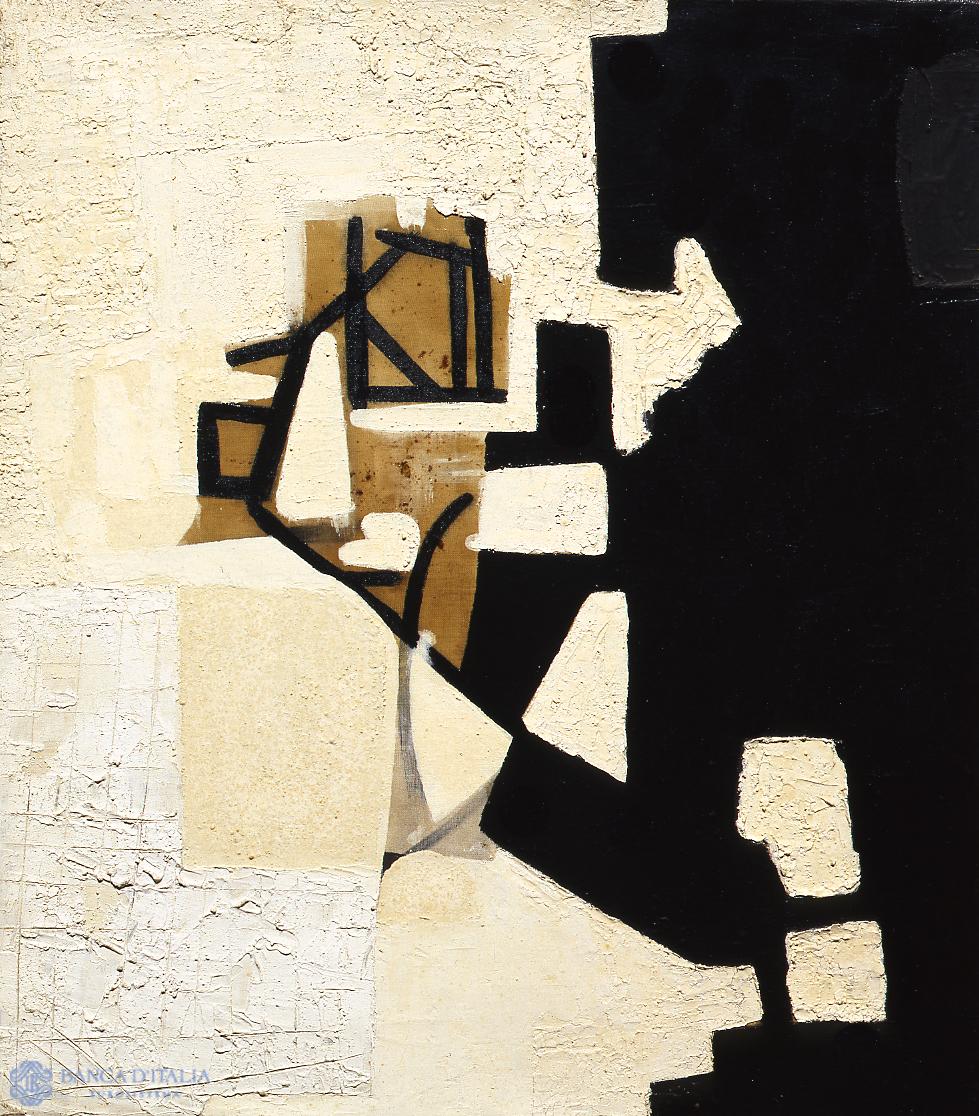The spatial arrangement of this small painting is rather complex. It comprises a left-hand zone dominated by the various shades of white, and a right-hand zone, occupied by a thickly applied coat of matte black. Between the two areas – where a play of visual ambiguity prevents us from establishing which side is closer to us and which, instead, recedes into the background – is a mosaic of simple architectural elements written on ochre by a strong, almost coarse black mark.
The painting dates from 1951, just before the great season of the Sacchi (a series of paintings of burlap sacks), and is one of the many testaments to how profoundly rooted in Burri was his experimentation in Roman Tonalism, which involved harmonizing various similar shades around a single chromatic tone. An element that is particularly present here in the wide spectrum of whites, which flow towards a pale yellow, before becoming ochre. In this youthful work, there is an already marked propensity to insist on the materiality of the layers: in places these are raised, so that the surface appears uneven and pricked with light. Even more striking, finally, is Burri’s unconditional embrace in the early 1950s of the geometrism of Parisian neo-concrete painting, heir to the theories championed by Cercle et Carré in the 1930s. In 1951, in fact, Burri took part in the exhibition Abstract and Concrete Art in Italy at the National Gallery in Rome, while prior to this he had taken part in two editions of Salon des Réalités Nouvelles in Paris, a temple of international concrete art.
Alberto Burri, Bianco nero
Bianco nero
Painting
20th century AD
Abstract

Artist
Date
1951
Material and technique
Oil and mixed technique on canvas
Measurements
53 x 46,5 cm
Compiler
Fabrizio D'Amico
